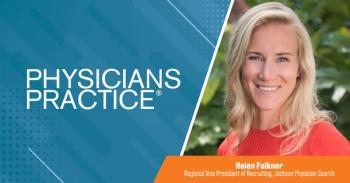
Balancing Quality Alerts in the EHR
Quality alerts in the EHR can help remind physicians of urgent issues, but it's important to tailor the alerts to specific patients and leverage medical research.
CMS captures data on adherence to clinical guidelines, care coordination, health outcomes, among other things. Alerts are built into EHRs to draw physicians' attention to the need to schedule their patient for a colonoscopy or a mammogram. But these alerts are slowing down physicians who are already struggling with documenting care in the EHR while seeing fewer patients than in their pre-EHR days.
Physicians Practice recently talked to Steven Waldren, MD, director of the Alliance for eHealth Innovation at the American Academy of Family Physicians, to get his pulse on how these alerts help physicians and patients. Waldren also touched on the importance of making the alerts useful, rather than cumbersome for physicians.
Why are such alerts helpful and/or necessary?
They're helpful for a couple different reasons. It would take a physician 7.4 hours per day to do everything they needed to do in terms of preventative services for their patients.
These alerts are very helpful with patients with chronic conditions, such as diabetes or upper respiratory disease. Prompted by these alerts, it's easy to take the seven minutes you're with the patient to focus on what they need to do to manage their diabetes, for example.
This is even more important with older patients with multiple chronic conditions. Take, for example, a female patient in her 60s. She has type II diabetes, coronary heart disease, asthma, arthritis, and an upper respiratory tract infection for which you need to write a script. EHR alerts help determine potential interactions between the different medications she's taking.
How can a practice strike the right balance with quality alerts so that they're helpful rather than cumbersome and slowing down the physician?
It comes down to prioritizing that list of alerts the physician sees while they're in the room with the patient. The most important alerts for the physician to see are those that are critical for that patient.
I recommend dividing those prompts into two different sets. Those that are critical or severe and those that are not and that break into the physician's workflow [unnecessarily]. With the critical or severe alerts, the physician can't move forward unless those issues are addressed. That could be about a diabetes patient whose hemoglobin levels are too high or who hasn't had a foot exam in months. For the alerts that are less critical in nature, those are appropriate for future follow-up.
What else should practices be thinking about when it comes to quality-related alerts within the EHR?
I would say that today's solution is only a Band-Aid. As we move forward with more quality measures and as evidence level changes, we're going to learn more things about diet – such as what we've learned about cholesterol not causing heart disease. This isn't something that should be taking up a physician's time in the EHR.
That means the technology needs to be smarter. The healthcare IT industry needs to be able to take these recommendations and prioritize those that should be priorities for a physician.
On top of that, you need to know the risk to a particular patient. I think asking a physician to do that is not sustainable. This is work that needs to be done on an industry level.
Newsletter
Optimize your practice with the Physicians Practice newsletter, offering management pearls, leadership tips, and business strategies tailored for practice administrators and physicians of any specialty.




